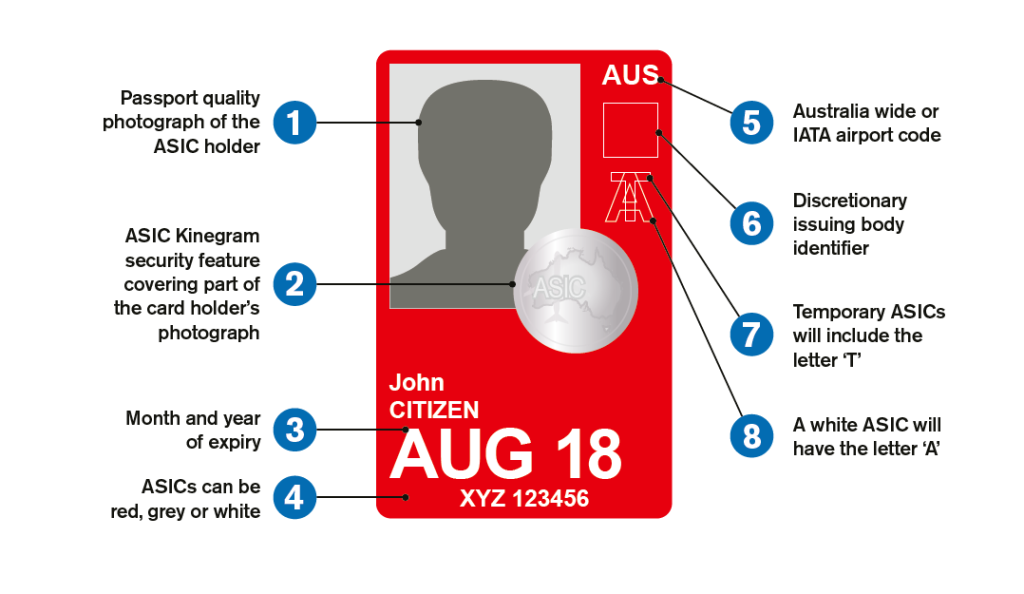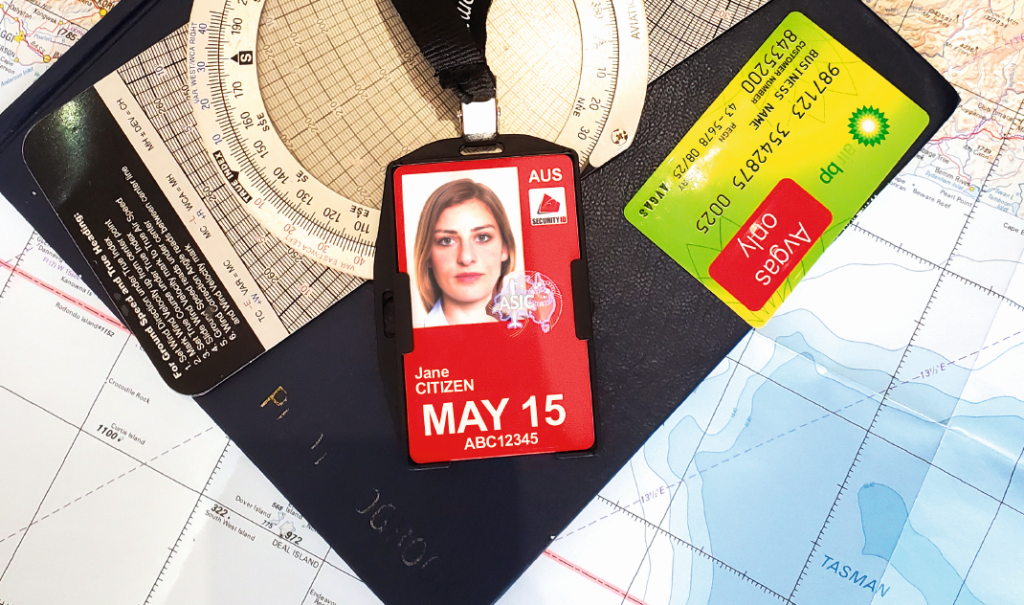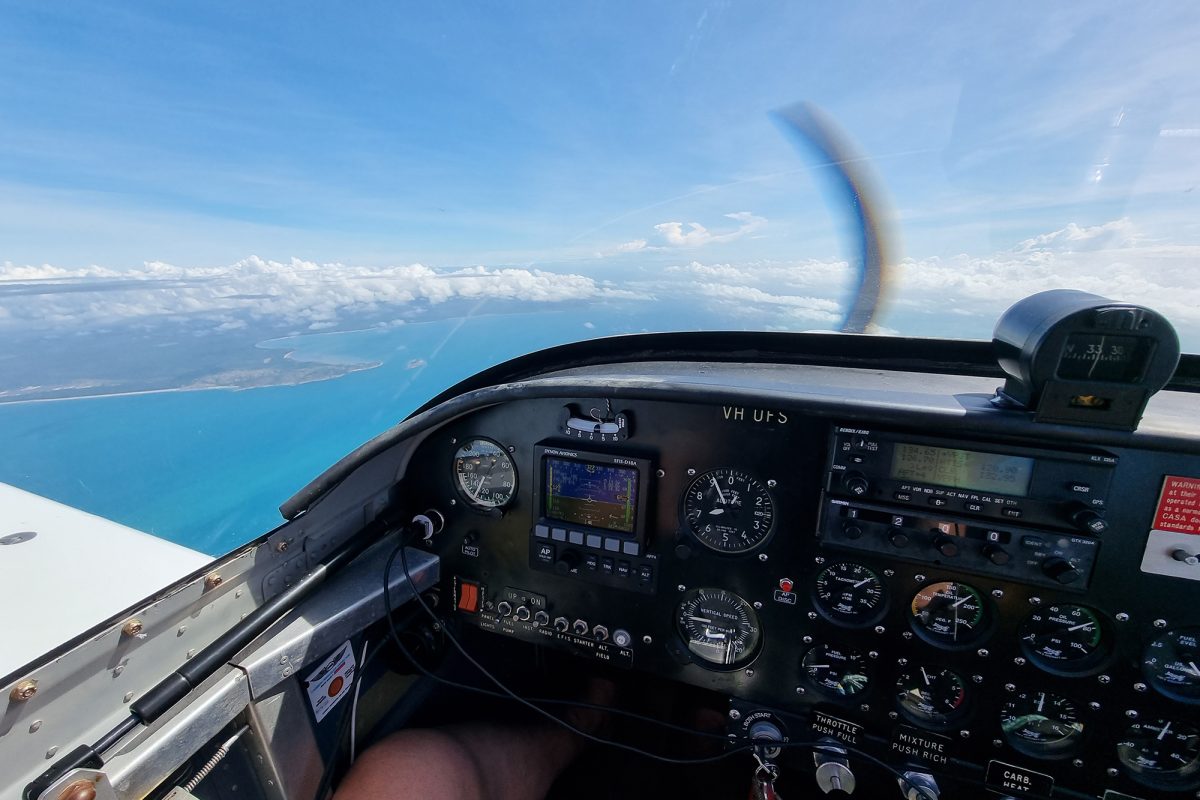GET THE ALL-CLEAR BEFORE ACCESSING A SECURITY CONTROLLED AERODROME
Want to access a secure airport and look like a real pilot while doing it? Then you need a ‘red card’ to complete your outfit. Ed Jones provides a bit of background about the process and what it all means.
That red card is called an ASIC, or Aviation Security Identification Card, and it’s necessary if you want to go into security-controlled areas of particular aerodromes. The system came in fairly suddenly after 9/11 and a worldwide attempt to tighten security around airports. The ERSA tells you if an airport is security controlled. Take a look at YBHI (Broken Hill, NSW) for example, or YMIA (Mildura, VIC), or any towered aerodromes and you’ll see something like this: “This AD is a Security Controlled Airport”. It’s usually under the aerodrome ‘Remarks’.
What you might not know is that airport security isn’t only a CASA conversation – it’s overseen and audited by the transport security area of the Federal Department of Home Affairs, and they’re cracking down on their airport checks as you read this. This means airport managers have to be on their best behaviour – and ultimately, we as pilots, need to know our responsibilities. For example, if you have a passenger under your supervision and they step into an area of conflict at an airport (such as walking off a designated walkway and onto a taxiway), they’re your responsibility. The airport has to log anything that is reported to ensure they’re compliant when they are audited, and if someone like a Rex pilot sees it, they need to call it in.
Another fun fact you don’t want to get wrong: an ASIC is not an access card. It does not give the holder the right to access secure areas and zones without the permission from the relevant authority or facility owner or operator, so it’s always best to call ahead to a security-controlled airport if you’re unfamiliar or unsure.
There are a few variants to an ASIC, but the two main types for RAAus purposes are a Regional Card for use at one specified airport, or an AusCard, which is for two or more airports. You can also get Red or Grey, the difference being that Grey can go to Secure Areas and Landside Secure Zones, but not Airside Secure zones.
If you’re like most of us in RAAus, the Red AusCard (or a ‘Major Airport Card’) is the way to go: it’s the same process, and it’s a bit like a ‘VIP’ in the way that you have the option to get a broader security clearance (subject to demonstrating your requirement – we’ll get to this in more detail shortly).
As an RAAus pilot, the main reason you’d be applying for an ASIC is if you’re a person with an operational need for unescorted access to the secure areas of security-controlled airports and the security zones. Your application undergoes an ASIO security assessment, an ACIC criminal history check and an immigration check (if required). Yes, that’s right – you will be vetted by ASIO. This does not make you a secret agent…. Unless you were one to begin with.
If you buzz around your local airfield or visiting non-controlled regional airports, the only reason you might want one is to feel warm and fuzzy that you look legitimate, or maybe to try your luck at a bar. However, you probably wouldn’t be demonstrating an operational need that justifies your application.
There’s a cost for the card too, so stay tuned. Once upon a time, CASA and RAAus both issued ASICs, but between a combination of legislative changes and sticking to their core operations, you now need to go elsewhere. There are suppliers such as Security ID (securityid.com.au) and Verotas (asic.net.au) who take an online application. It feels a lot like a passport application when you do it, all the way to visiting an AusPost outlet to certify your documents and ID.
The process goes a bit like this: You jump online to create an account, answer some questions and upload your identification documents. It’s the old ‘minimum of one original document from each of Category A, B, C and D’, much like a passport application. An easy combo would be a birth certificate, driver’s licence, Medicare card and a utility bill. Plus, change of name documents if it applies to you.


There is an offline component though, as your application and ID needs to be certified by an agent. For most people, Australia Post has almost 400 outlets around Australia and the staff there will process this for you. Check with your flying club/school, some CFOs, instructors and administration staff can do this as well.
There’s a self-reporting model that you need to read about, addressing things like if your details change, if you were to have a convicted offense, if your card is stolen or how to go about returning your old card when you renew. You also need to upload some operational documents (which airports you fly to, and if applicable, a letter demonstrating employment requirements), to demonstrate that you have a need for the card you apply for, so there’s little point getting one for fun. Cost-wise, you’re looking at around $230 for the application. Another good reason not to get one for fun. It’s valid for two years, then you renew. The process is pretty quick, and most people have their approval within 10-14 working days.
At applicable airports, you must visibly wear your valid card and you’re good to go (remember, it is not an access card; it is an ID card). Access is controlled by each individual airport. The reality is that you’ll very rarely be asked to show your card unless you’re at a larger or controlled airport. The first time I was asked to show my card was on a flight back from Canberra. I’d landed the plane and walked out for a meeting. Upon return, the plane sitting in the GA parking lot and ready to depart towards Brisbane, the Canberra airport staff wouldn’t let me through to airside if I didn’t produce the ID clearance. Glad I had it on me!
On another flight, I bumped into an airport manager that had a quiet word with me on my way out. He’d told me that we were wandering from the official designated walking zone on airside when my passenger and I had stuck our heads inside a hangar to peek at some King Airs, and a Rex flight spotted us too close to their designated tarmac. The Rex pilot was doing their job, and so was this airport manager – but I mucked up when I should have been doing mine. I was very apologetic and there was a clear lesson learned, I realised that I’d become a bit complacent with the rules. It had to be logged, fortunately not going any further. That same Rex pilot kindly extended his downwind leg just so that he could give way to me departing for Victoria! I called the airport manager up a week later still feeling terrible, I apologised again and thanked him for his explanations and treatment. Still, I won’t be making that mistake twice.
Finally, it wouldn’t be much of an article if I didn’t leave you with some sideways parting advice, so here it is: if you’re looking to get a red card and fly into some security controlled airports, it’s useful to brush-up on your radio calls. In my early flights, I had the primary radio calls written down and I’d marked on my map where to call them – just so I wasn’t paranoid about missing a beat before I built some confidence. I’d trained at a regional airfield and wanted some practice still. There’s a good chance you’ll need to communicate with some RPT pilots at some point – both reporting your position and intentions, but also coordinating right of way and keeping an eye on each other’s position. They are easier to spot, but we’re only little, so don’t be afraid to communicate – they’re very nice when you do, and talking to the ‘big guys’ is a bit of fun.









